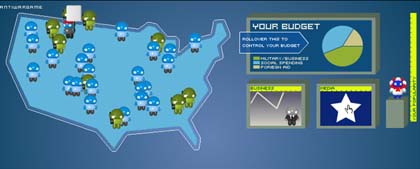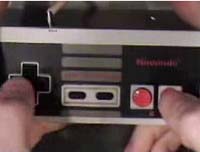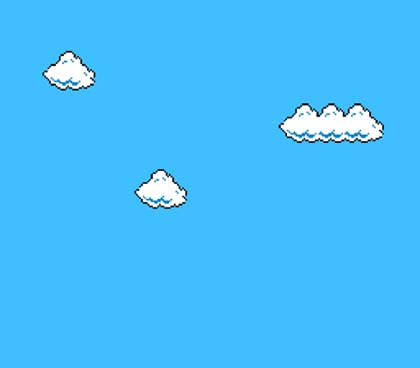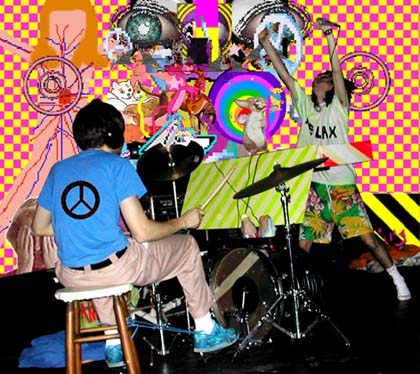Romancing the Black Box
Buried away in the summer programme of the ICA, the new media show Radical Entertainment represented an ambitious attempt to anthologise recent interdisciplinary work focused on the digital domain. Here, Ian White reviews the exhibition and asks whether our idées fixes about the new media genre – its levels of ludic subversion, its critique of the institution of Art, its interactive nature – aren’t misnomers in the face of the realities of the white cube. Instead, he suggests, we might view these ‘black box’ works as a revitalisation of the legacies of Romanticism
Exceeding the minor scale on which it occurred, and somehow moving beyond its host institution’s low-key support, the ICA’s July new media event ‘Radical Entertainment’ pulled off a small feat of transformation. The season may have explored the modifications of submerged and emerging technologies. It may have showcased the renegade strategies and cultural appropriations that a specific, dominant gaming culture has induced. And it may have done both these things in the context of the actual, reconstructed and ubiquitously mediated youth market in which this gaming culture thrives. But new media curators Lina Dzuverovic-Russell (formerly of the ICA) and Lauren Cornell (of Williamsburg’s Ocularis screening house) managed, ultimately, to make this a festival about something much broader. Not so much a collection of parts as a collection of those parts’ frames, their modes of exhibition.
 > Metapet (2003), by Natalie Brookchin................................................................................................... In the ICA’s digital studio, Natalie Bookchin’s Metapet (2003) and Futurefarmers’ antiwargame (2003) both position the viewer as gamer. Bookchin’s game is seriously durational; in fact it’s as endless as 9-5. As the manager of a virtual pet, a worker within a generic corporate structure, the viewer/gamer becomes complicit in a nexus of typing speed and pseudo new-age therapies, plastic surgery and morale boosting hair dos, energy dips, ‘productivity’ and the double-edged sword of go-faster pills. The level of commitment we’re being asked to make here to keep our pet alive is clear: she’ll require delicate and regular attention. The idiosyncrasies of managers being what they are, we each learn our own lessons. My own personal horror was that absolutely nothing affects how much your pet earns in the short-term.
> Metapet (2003), by Natalie Brookchin................................................................................................... In the ICA’s digital studio, Natalie Bookchin’s Metapet (2003) and Futurefarmers’ antiwargame (2003) both position the viewer as gamer. Bookchin’s game is seriously durational; in fact it’s as endless as 9-5. As the manager of a virtual pet, a worker within a generic corporate structure, the viewer/gamer becomes complicit in a nexus of typing speed and pseudo new-age therapies, plastic surgery and morale boosting hair dos, energy dips, ‘productivity’ and the double-edged sword of go-faster pills. The level of commitment we’re being asked to make here to keep our pet alive is clear: she’ll require delicate and regular attention. The idiosyncrasies of managers being what they are, we each learn our own lessons. My own personal horror was that absolutely nothing affects how much your pet earns in the short-term.
In antiwargame we’re pushed up a rank or two, playing no less than Mr. (or Mrs.) President. In this ‘dynamic’ scenario, political protest and dissidence at ‘Home’ (a rough map of America) must be kept in check while ‘Abroad’ (a sliver of land in the South) causes trouble. (Something to do with oilfields, generals, the media.) President can raise taxes, shift around a pie chart of arms spending versus welfare investment, and while the political fallout from any rash (i.e. non-US-inc.) ideas is relatively predictable, it’s the disarming simplification of a complex argument and the speed at which antiwargame performs its semantic interplays that makes it addictive. If a virus sweeping the States, or even nuclear war, seem like so many end-games fuelled by hysteria and paranoia, they are nonetheless inevitable. Which, like some eternally repeated gag, I enjoyed obsessively.
 > antiwargame (2003), by Futurefarmers.
> antiwargame (2003), by Futurefarmers.
Alex Galloway/Radical Software Group’s RSG-SMB-TAB (2003) is a parody of this kind of interactivity. On the monitor screen is a close-up, locked-off shot of two hands manically operating joystick controls. Piled on the desk in front of the monitor is a massive computer print-out, a binary code transcript that details every instruction the on-screen hands are giving to the off-screen Mario as he is successfully ‘navigated’ through every stage of Nintendo’s Super Mario Brothers. There’s something of modernist heroics here: Galloway gives us the key to winning the game, while knowing the instructions are impossible to follow in realtime/gametime. Eliciting a schoolboy envy of his skill, a clear, juvenile line comes to be drawn between his prowess and our inability that ultimately feels like smugness. Albeit wrapped in a proto-conceptual framework of instruction-without-object and yoked to the modus operandi of 1960s and 70s high art dematerialisation, this new register of gaming nonetheless renders the viewer specifically as a non-player, unemancipated, beholden. It may be another gag, but for me the joke’s on Galloway since, while ostensibly making everything so excessively public, his impossible blueprint of a path to Super Mario glory nonetheless remains entirely private.
 > RSG-SMB-TAB (2003), by Alex Galloway/Radical Software Group.................................................................Other works in Radical Entertainment operated more like single-screen meditations. Nullpointer’s Q (2001) strips away all figuration from Quake, the game’s automatic destruction mode here tunnelling relentlessly through a virtual space of colour and sound. Emptied in this way, the promotional iconography ordinarily deployed to attract buyers to the game is transmogrified into formalist abstraction. Paper Rad’s website is a work of art: layer upon layer of glaring, flashing 1980s-inspired logos saturate a page with links to diaries, projects, music, cartoons and comic strips. Situated on the edge of functionalism, its hypnotic retinal impact takes you beyond information, into pure joyfulness and exhilaration. Like Paper Rad’s work, Beige/Cory Arcangel’s Super Mario Clouds (2002) and I Shot Andy Warhol (2002) offer perhaps the most interesting prompts for reading this season of new media work, namely a move beyond the technical, the fascination with exposed code, or the revelation of technologised social structures and semantics, into a territory more suggestive of the Romantic tradition.
> RSG-SMB-TAB (2003), by Alex Galloway/Radical Software Group.................................................................Other works in Radical Entertainment operated more like single-screen meditations. Nullpointer’s Q (2001) strips away all figuration from Quake, the game’s automatic destruction mode here tunnelling relentlessly through a virtual space of colour and sound. Emptied in this way, the promotional iconography ordinarily deployed to attract buyers to the game is transmogrified into formalist abstraction. Paper Rad’s website is a work of art: layer upon layer of glaring, flashing 1980s-inspired logos saturate a page with links to diaries, projects, music, cartoons and comic strips. Situated on the edge of functionalism, its hypnotic retinal impact takes you beyond information, into pure joyfulness and exhilaration. Like Paper Rad’s work, Beige/Cory Arcangel’s Super Mario Clouds (2002) and I Shot Andy Warhol (2002) offer perhaps the most interesting prompts for reading this season of new media work, namely a move beyond the technical, the fascination with exposed code, or the revelation of technologised social structures and semantics, into a territory more suggestive of the Romantic tradition.
In Super Mario Clouds, the game Galloway taught us how to win is divested of all its trademark figurines, leaving merely a cheerful cyan sky and a couple of irregular scrolling clouds. Arcangel’s piece is operationally ambiguous: it can be displayed on a monitor, as an installation work, and has also been turned into an edition of silkscreen prints. On his website an image of the hacked cartridge replete with masking tape is complemented further with details of the game’s code – all of it intercut with running commentary from Arcangel. In part, this text deals with the technical information of sheer process. Elsewhere, it demonstrates how a de-emotionalised programming practice is also a personally expressive craft:
 Super Mario Clouds (2002), by Cory Arcangel/Beige.
Super Mario Clouds (2002), by Cory Arcangel/Beige.
‘The first time I took a class in “computer science” was at a summer school when I was 8 or 9 years old and I remember crying and switching to the “storytelling” class… I have since grown used to programming only because it is the mechanism that seems to make most of the world move. Believe me, if I could order pizzas [Dominos has a great online delivery mechanism] by painting, I definitely would paint.’
The deliberate limitation of means characterises I Shot Andy Warhol equally, while Arcangel’s band The 8-Bit Construction Set is like a metaphor for both his and the Beige programming ensemble’s practice:
‘Ever wonder why Mario and Zelda were little squares? The Nintendo can only display graphics in 8 pixel by 8 pixel squares, and can only hold 8K of graphics in total therefore Mario and Zelda were simply adhering to the hardware limitations of the Nintendo System. These two hardware limitations defined the aesthetic of most early 80s video games on the Nintendo, and making “art” for this system is a study of these limitations.’
In I Shot Andy Warhol players shoot 8-bit Warhols while avoiding such luminaries as Colonel Sanders, Flavor Flav and the Pope. The 8-Bit Construction Set create music that sounds like how it would look, the aural equivalent to 8 pixel x 8 pixel squares. Their 12” ‘Atari vs. Commodore64’ (Beige Records, 2000) pits one consul against the other on flip sides of the vinyl. It’s a record made for DJs maybe, but it is also not without emotional resonance, the slightly deeper tones of the Commodores locking me into a nostalgia that the Atari’s cheaper upbeats couldn’t touch. Within these limited parameters, we can still be sold a very particular sensibility. Like Arcangel’s code revelations, the 8-Bit Construction Set’s live performances show a sometimes less than receptive audience exactly which computers do what. In so doing, they demystify machines, disable the macho cult of wizardry that surrounds them and still produce magic. In this context, I understand Super Mario Clouds as a full void, located in a craft-based tradition where everything is explained by virtue of a profound emptiness.
 > Paper Rad's video work.
> Paper Rad's video work.
In New York, Beige works with Paper Rad, and Arcangel with Galloway. They’re groups of connected individuals working on joint projects that could be described as a network – if that word didn’t feel so much like a tedious depersonalisation. Radical Entertainment included two cinema programmes by similar groupings from the UK: a tour of London with the Space Hijackers and a talk with Vicki Bennet of People Like Us (whose video montages were also shown in the digital studio). In the cinema, Paper Rad transferred the aesthetics of their site into a frenetic single screen video work and Seth Price’s Industrial Synth (15mins, 2001), a freefall through ricocheting layers of images, turned out to be not unreminiscent of Steve Reinke’s videos.
Like all good romanticism, it’s in the fissures of common culture that this work opens up. Here we find not only the space for inquiry, but also the work’s own baseline: being alive. The shift from white box to black cube is now a commonplace gallery construct. But it is with difficulty that it signifies a clash of registers or poses potentially political questions about art’s commercial structures, since in this privatised realm the collector owns the idea of the audience but is not quite able to replicate it. Radical Entertainment’s achievement was to flamboyantly stage this problematic dynamic of art production and consumption, conceptual space and physical action, movement and stasis, imaginary lives and self-expression.
Radical Entertainment was at the ICA from 9-26 July 2003.
Cory Arcangel www.beigerecords.com/cory/index.htmlPaperRad www.paperrad.org Natalie Bookchin’s Metapet www.metapet.net Futurefarmers’ antiwargame www.antiwargame.org Ocularis www.ocularis.net
Text by Ian White, with subject/object/verb traditionally reconfigured by Pauline van Mourik Broekman's edit
Mute Books Orders
For Mute Books distribution contact Anagram Books
contact@anagrambooks.com
For online purchases visit anagrambooks.com






